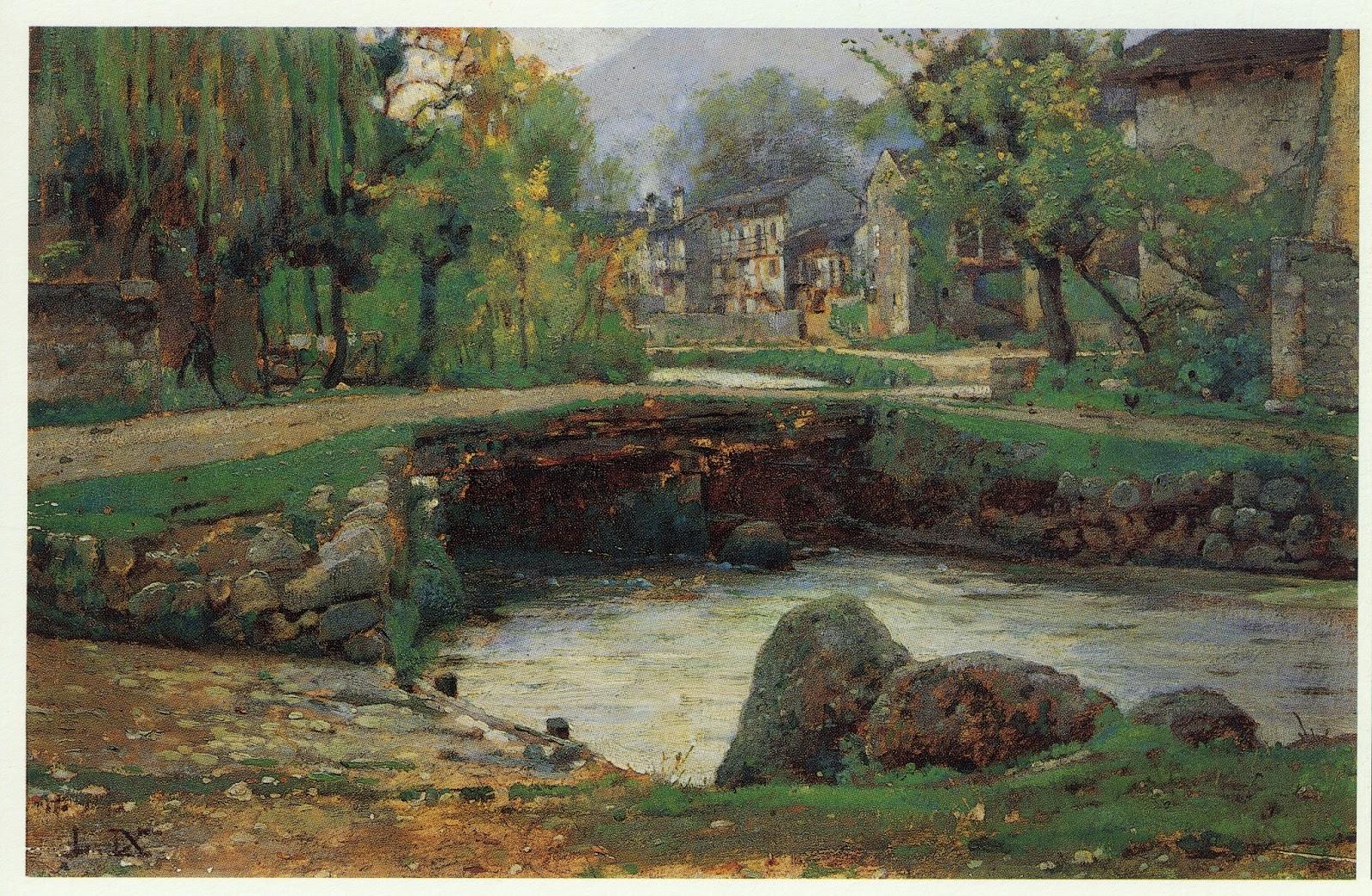Painter, born in Fusina (Venice) 8 December 1850, died in Venice on 17 October 1918.
Completed his tecnical studies in Treviso, he attended the P.M. Molmenti school at the Academy of Fine Arts in Venice, school that educated him in the objectivity of an acute and precise realism.
At only two years old, he moved with his family to Sacile, on the banks of the Livenza River, in Friuli.
Having returned to Venice in 1865 to attend the Accademy, he returns to Sacile for a short period due to the tragic death by drowning of his little brother Iginio.
There are many of his paintings which testify a frequent presence of the painter in Polcenigo, particularly in Coltura, Gorgazzo, Santissima.
In 1873 at the Brera Exhibition he successfully presented “Le Sorgenti del Gorgazzo – The Sources of Gorgazzo”, a youthful masterpiece purchased by M. Guggenheim, as well as “Sull’Ave Maria a Coltura – On Ave Maria in Coltura” and “Verso Sera a Coltura – Towards Evening in Coltura”.
In 1873 he performed an absolute masterpiece like “Ritorno dai Campi – Returning from Fields”, set in the surroundings of Polcenigo.
After the death of his father, he moved definitively to Venice in 1879.
In 1880 at the Brera Exhibition he proposed “Verso sera sul Livenza – Towards evening on the Livenza”, nearby Santissima. In 1897, at the second Venice Art Biennial, he presented the enormous painting “Funerale di un Bambino – Funeral of a Child”.
In 1898 the same painting was proposed again at the St. Petersburg Exhibition and purchased in 1901 by Maria Fedorovna, mother of Tsar Nicholas II.
In 1909, another of the most beautiful works of his maturity, “Prima Pioggia – First Rain” also set in Coltura, was exhibited at the Venician Biennial.
In 1915, he moved from Venice to Bologna.
On 4 May 1915 he was appointed Commendatore of the Kingdom of Italy.
Seriously ill, in 1918 he returned to Venice where he died on 15 October in Casa delle Zattere – House of Rafts.
Polcenigo - 1912
